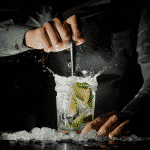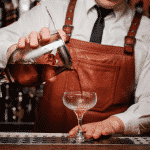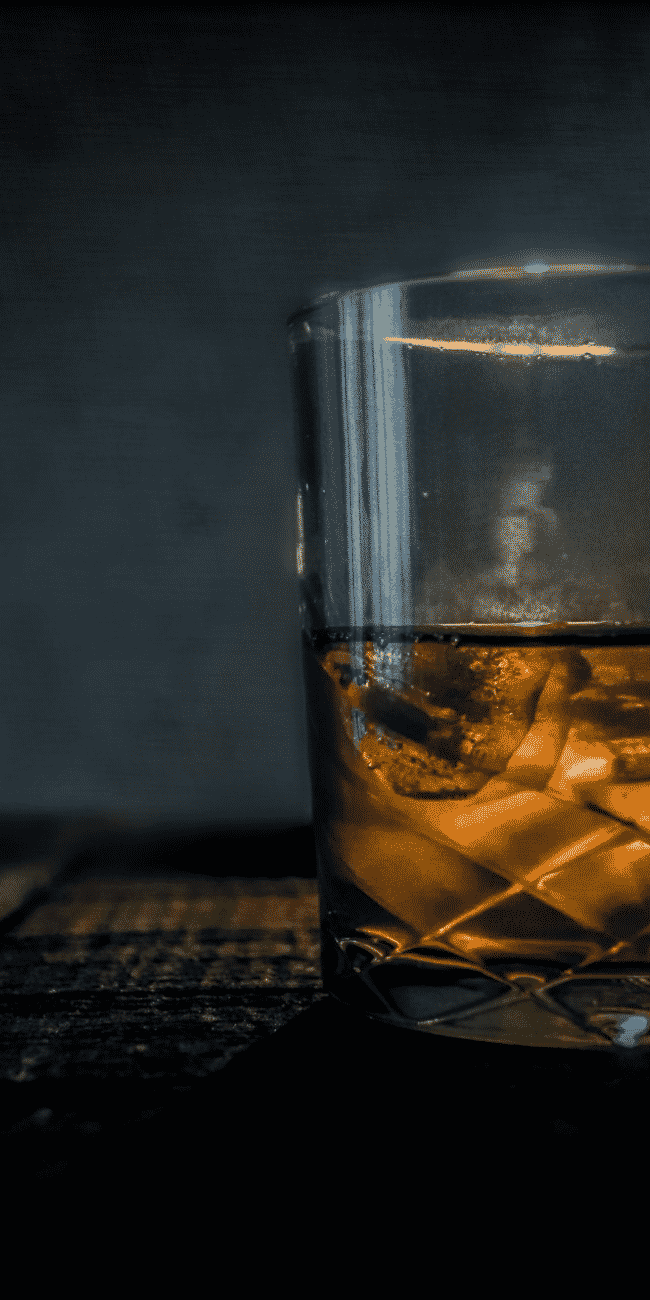Once we get through the nitty gritty of the basics involved we are really going to get into the psychology of being a bartender, the things that truly set us apart from the rest, the funny stories and the customer service are all secondary to knowing your trade. Take the time now to really learn these basics that have been posted and you will be well on your way to becoming a legend of the industry.
lets have a look at…
BOURBON and RYE
Definition-
Bourbon–
Bourbon can be made anywhere in the USA, but it is mainly native to the Southern state of Kentucky. Only Bourbon from Kentucky can advertise the state in which it is made (Kentucky Straight Bourbon Whiskey). It must contain at least 51% corn but no more than 80% with the other 20-49% comprising of a combination of rye, barley and wheat the (recipe of grains is known as mashbill). It cannot be distilled to a strength greater than 80% abv and must be aged in new American White Oak barrels (that are often charred on the inside) at a strength no greater than 62.5% abv. It must be aged for a minimum of two years and bottled at a strength no lower than 40% abv. No colouring, flavouring or sweetener can be added to Bourbon.
Rye–
This is a whiskey that is made with at least 51% Rye in its mashbill but with other flavour grains including a significant amount of corn as Rye has a spicy quality to it. There is generally no minimum ageing period but to be called Straight Rye it must be aged for at least 2 years in new Oak Barrels.
Brief History–
Distilling has occurred in American since the first settlers arrives there. Originally, brandy from apples and honey wines were made, although from the 1650s rum was being distilled from molasses from the Caribbean. Grain distillates first started to be made towards the late 1700s when Thomas Jefferson offered plots of land below Virginia (effectively Kentucky) for pioneer settlers providing they built a permanent structure and harvested a crop for at least three years. Most of the early settlers were Scottish or Irish immigrants escaping famine and oppression in the British Isles. Many of them were small-hold farmers who had previously farmed Rye and Wheat. They soon found that corn was a more suitable grain for the conditions in Kentucky and soon started to produce a surplus. Transportation of this surplus to market was impractical due to travel time and the fact that the corn deteriorated quickly during travel. The answer lay in distillation, as whiskey was easily transported and far more profitable per unit. Whiskey also had the benefit of that it would improve with age and movement – corn would not.
The whole area from northern Kentucky through Southern Indiana into Northern Tennessee exists on a limestone plateau, which is one of nature’s best water filters. This meant that very high-quality water was being used in distillation and dilution to bottling strength. It also meant that there was excellent transport means via the rivers (Mississippi and Ohio) network for sale of the whiskey. The towns of Bardstown, Loretto and Louisville became centres of whiskey production that remain so today.
It is said that Elijah Craig was the first man to create the first real Bourbon. He was the first to use the charred effect inside of the barrels, which means the ageing process was sped up, which gave the whisky more of a vanilla and chocolate taste and aroma. Others credit the creation of bourbon to Dr. James Crow, he created and perfected the sour mash process.
Production–
When making whiskey, a Bourbon producer must first determine the ‘mash bill’ of the whiskey. This is the recipe of grains that they will use. Bourbon must be made with at least 51% corn, but this is usually more like 70% in practice. The remaining balance is made up of a mix of ‘small’ or ‘flavour grains’ (usually barley, rye or wheat). The grains are ground down into a grist (the same as in Scotch). This grist is then cooked with limestone water in a pressure cooker to reduce the starch in the grain into fermentable sugars. The ground grains are added in a specific order during cooking to get the highest yield of fermentable sugars. Corn is added first, then rye or wheat and finally barley as the sugars convert at different temperatures. This is then termed ‘mash’. Yeast is then added. Yeast is one of the most important variables in Bourbon production with each distiller using their own yeasts. Finally, all Bourbons add an essential ingredient – Sour Mash. Sour mash is the acidic residue from the previous batch of whiskey made. Generally, about 25% of the mash is held back for the latest batch, mixed in, and then 25% is taken out for the next batch. This ensures consistency.
Stay tuned for some classic cocktails using these, or sign up and get emailed when posts get published.
If there is anything you would like me to cover more about Bourbon and Rye then leave a suggestion in the comments below.










